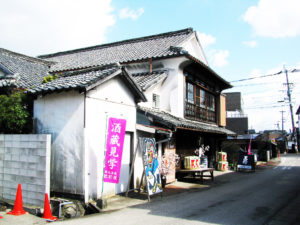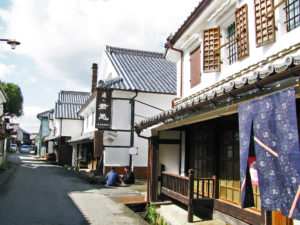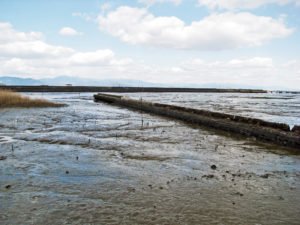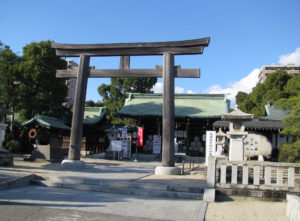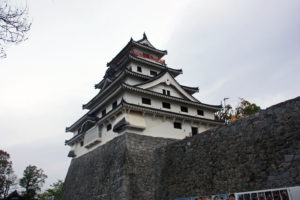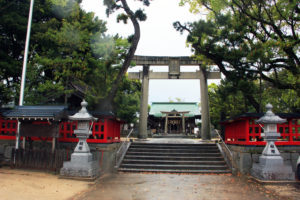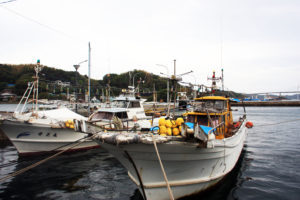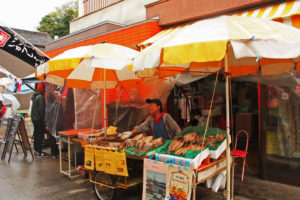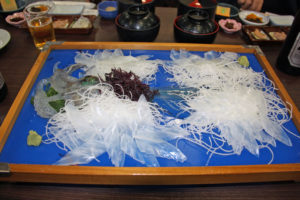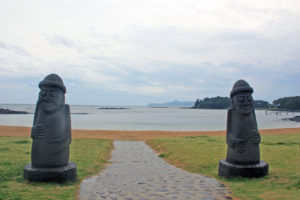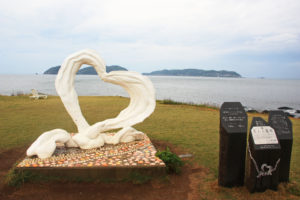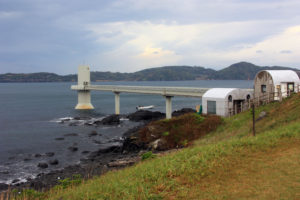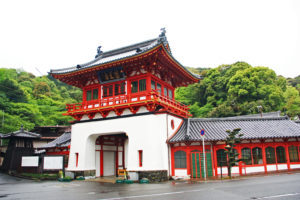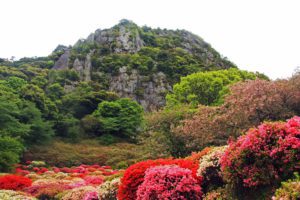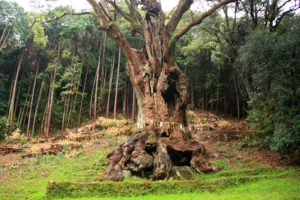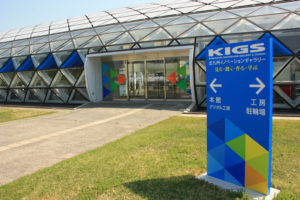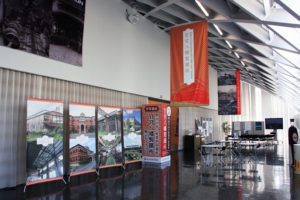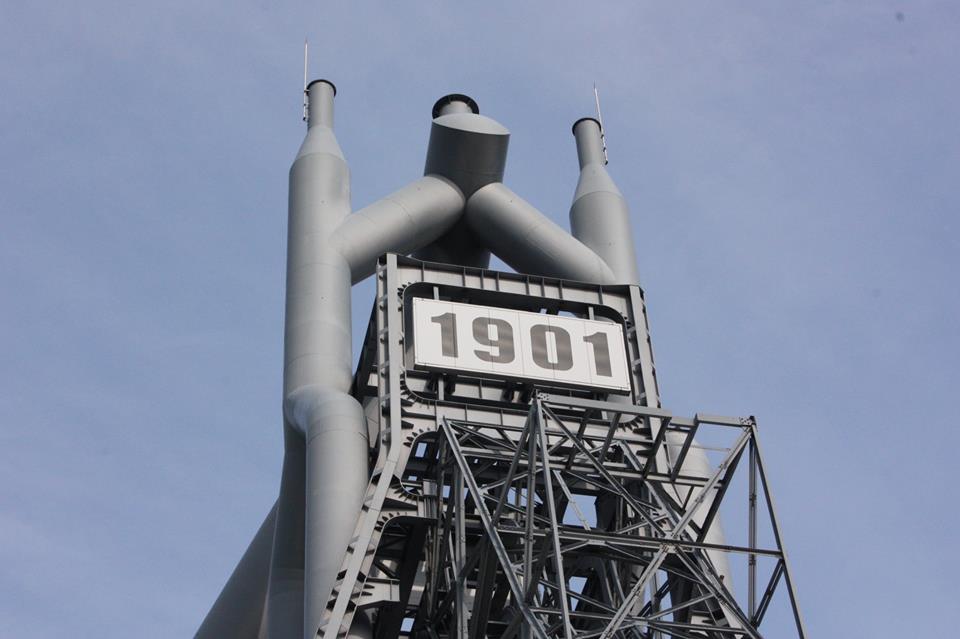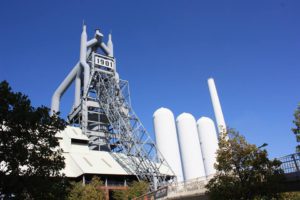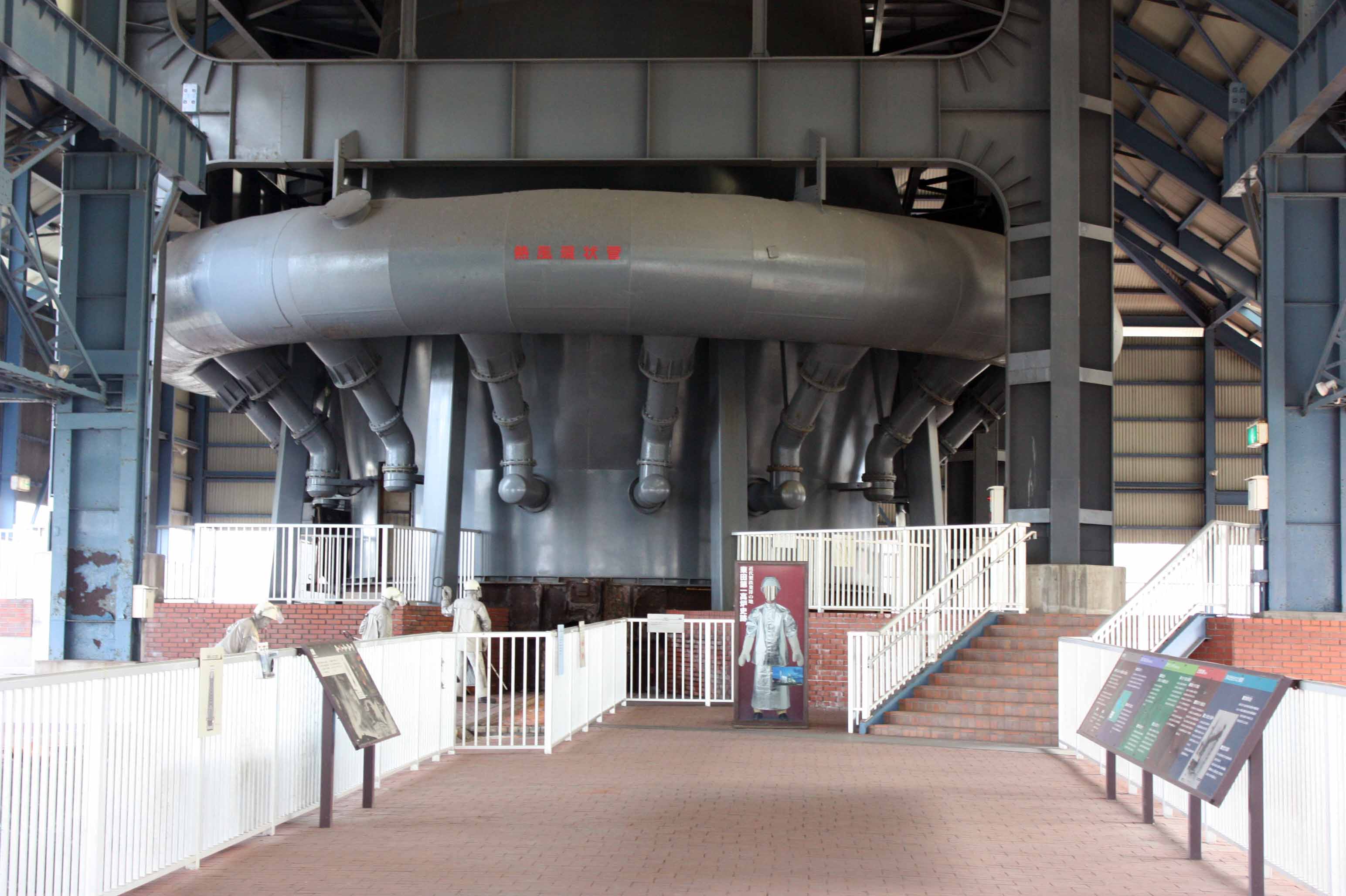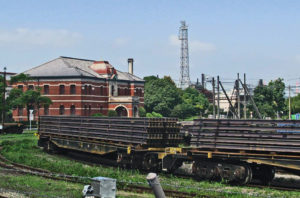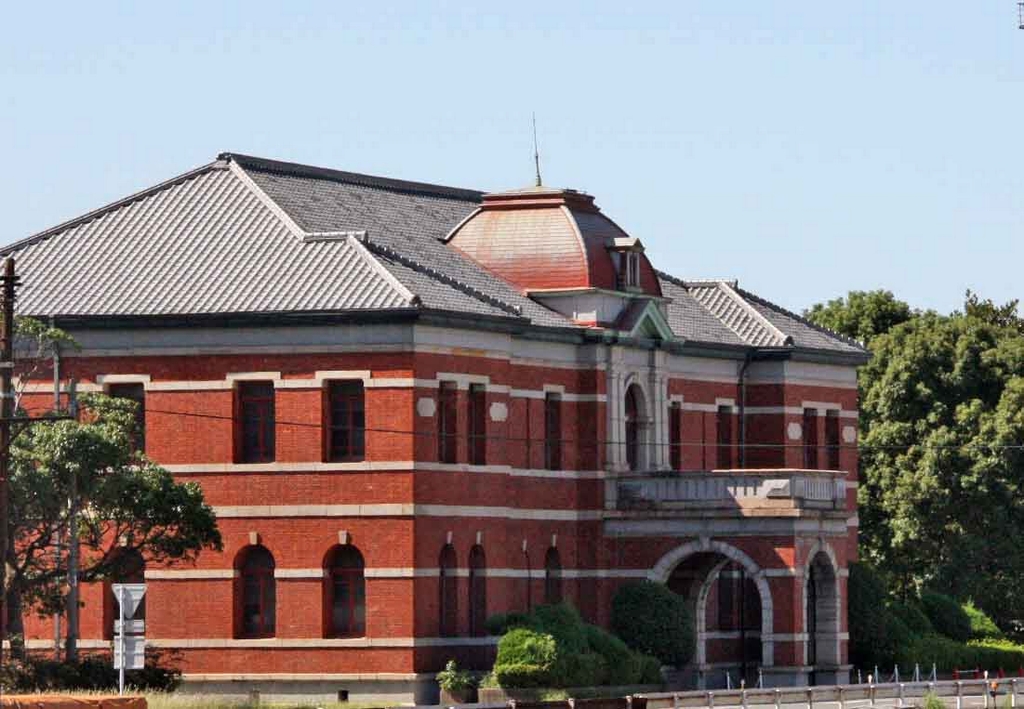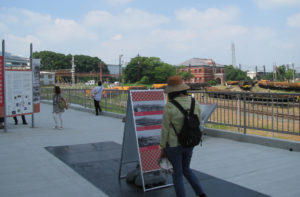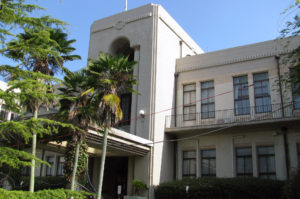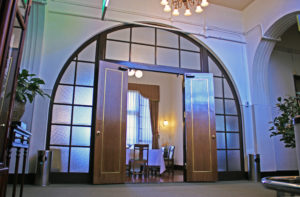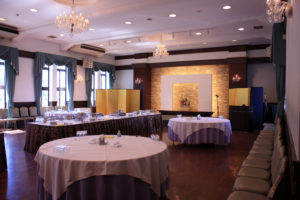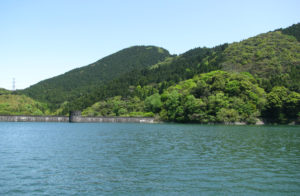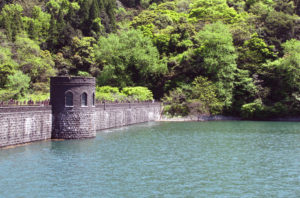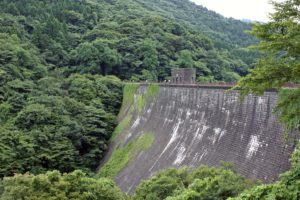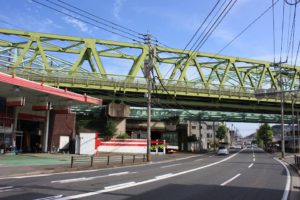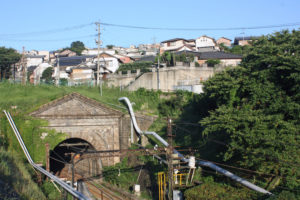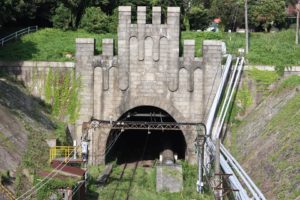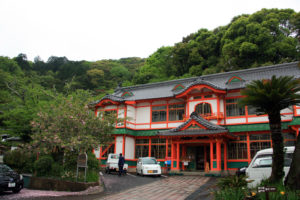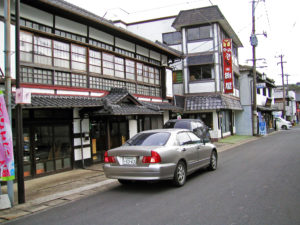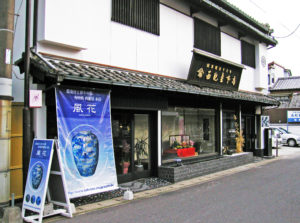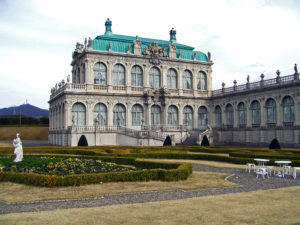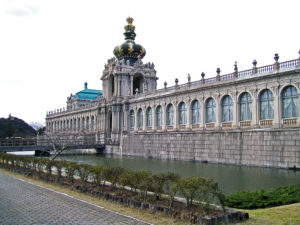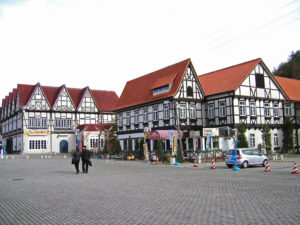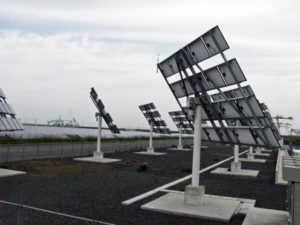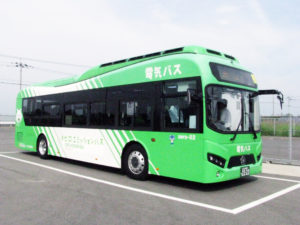Recycling & Waste treatment technologies tour
Kitakyushu is offering various Recycling and Waste treatment technologies.
Kitakyushu City, once known as a “town of pollution,” now plays the role of the driving
force in creating a recycling-oriented society in Japan making use of the experience
and know-how it accumulated in the process of overcoming its pollution in order to
provide international cooperation. Our study tour provides the solutions of Recycling
and waste treatment issues
Model of the tour
・Lecture of Recycling and waste treatment
Lecturer : Masa Kondo, managing director of Japan KYUSHU Tourist
(have expertise and experience in the technical field)
Content of lecture
History to Environmental Future city
World leading Recycling and waste treatment business
Venue : Kitakyushu Innovation Gallery
Where to visit
Please select from the following
Eco Project information center that supports the Eco-town. It introduces initiatives and activities
implemented in Eco-town to encourage people to proactively used the facility for such activities
as environmental study sessions and interaction amongst visitors.
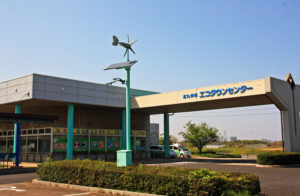 |
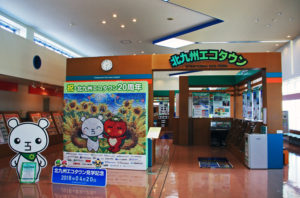 |
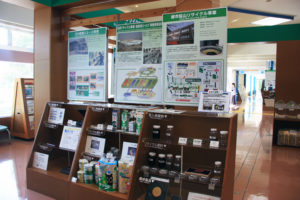 |
Plastic PET Bottle recycling / Nishi-Nippon PET Recycling
PET (polyethylene terephthalate) bottles are sorted by municipalities and recycled into pellets and
flakes, which can be used as raw materials for polyester fibers and egg cartons.
 |
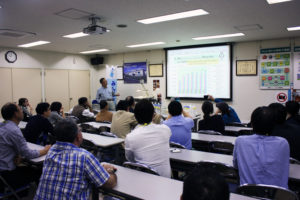 |
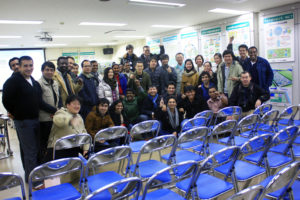 |
Melting Furnace / Sin-Moji Plant
The collected waste including metals is melted at over 1,700 degree Celsius in the Melting Furnace
and then the melted slag and metals are discharged. The slag is used as raw materials for pavement
and bricks and the metals are re-used for other steel products. The process and technology of the
Melting Furnace can be learned.
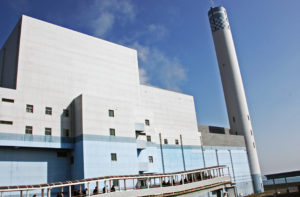 |
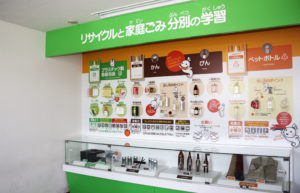 |
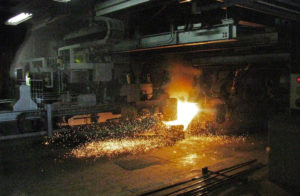 |
Waste paper recycling / Kyushu Seishi
Refined waste papers is recycled into toilet papers. Sludge generated during the toilet paper
production process is used to produce a foaming inhibitor used by steel works.
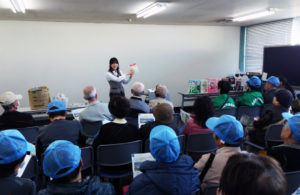 |
 |
 |
Hiagari Sewage water treatment plant
The sewage come through the sewer pipe is purified in the plant and flow into the sea. There is an
also new technology plant which the electricity is generated using the sludge from sewage. At the
Visitor Center established in 2015, sewage treatment process and technologies can be learned.
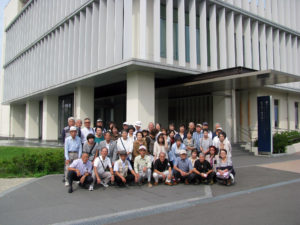 |
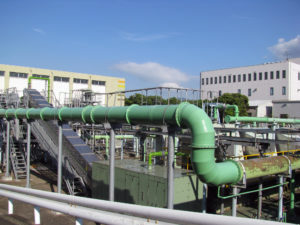 |
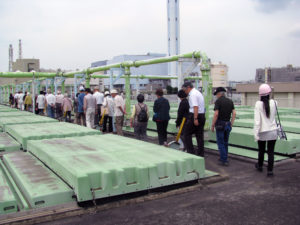 |
Your equiry can be sent by selecting the Enquiry Form link below.
You can also contact us by e-mail at info@japan-kyushu-tourist.com
Tel : +81-93-521-8897, Fax : +81-93-521-8898
Address : AIM buiding 6th floor, 3-8-1 Asano, Kokura-kitaku, Kitakyushu-city, Fukuoka-prefecture
HOME About us Our Services Terms and Conditions
Saga, Kashima, Yotoku Inari Shrine tour
Where to Explore
Kashima, Utoku Inari Shrine, Saga-city
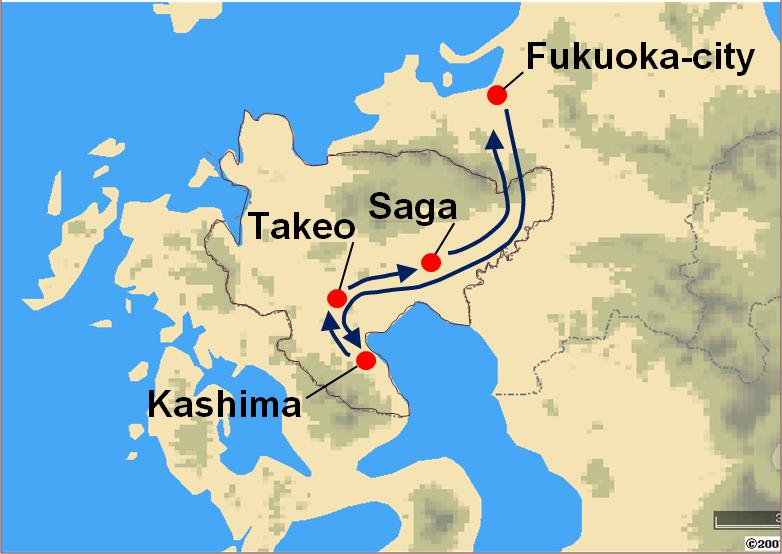
General condition
・Departure and disbandment place is in Fukuoka-city
・Chartered vehicle is used
Itinerary
8:30 Depart Fukuoka-city
Transfer to Kashima using Kyushu Expressway, 1 hour 30 minutes
Visit Yotoku Inari Shrine
transfer to Saga
Lunch at Saga-city
Exploring Saga-city
Saga Castle History Museum. Saga Shrine, Mietsu Naval Dock
Transfer to Fukuoka using Kyushu Expressway, 1 hour
18:00 Arrive at Fukuoka-city
Located about 60 kilometers southwest of Saga City.
It borders the Ariake Sea to the east and Nagasaki Prefecture to the southwest.
Feature sightseeing spot is Yutoku Inari Shrine and also Sake brewery visiting is recommended.
|
Sake Brewery |
Sake Brewery |
Ariake Sea |
The Shrine was used as a Shooting location of Thailand drama.
One of the most famous Inari shrines in Japan and located in Kashima-city, Saga-prefecture.
Dedicated to Inari, the deity whose messengers are foxes, it is the third largest of its kind
in Japan.
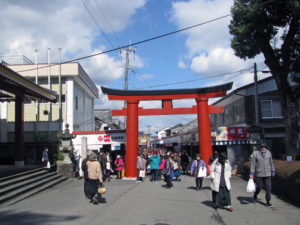 |
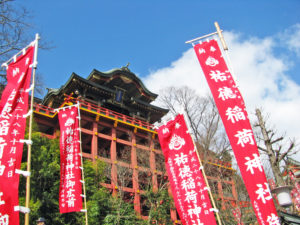 |
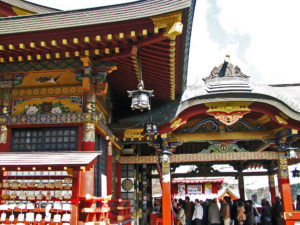 |
It faces the Ariake Sea on the south and is home to Saga Airport.
Saga is known as the plece where it has made a great contribution to the Japanese
Industrial Revolution.
Japan’s Industrial Modernization activity was started here in Saga.
The largest restored wooden building in Japan at 2,500m2, the museum offers the unparalleled
chance to experience a Japanese castle from more than 175 years ago.
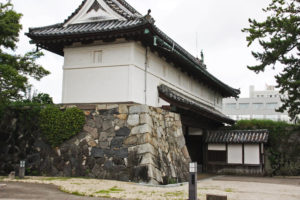 |
 |
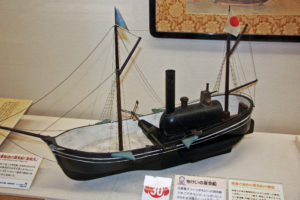 |
The shrine is designated as the special government shrine.
The shrine dedicated to Naomasa Nabeshima, who oversaw the manufacture of Japan’s
first modern Cannon.
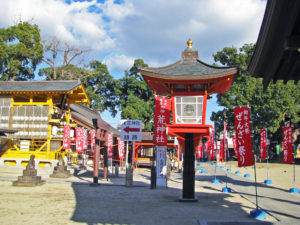 |
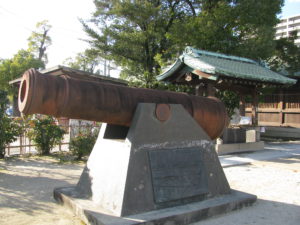 |
World Heritage, Site of Japan’s Meiji Industrial Revolution
Before Meiji Restoration, the Mietsu Naval Dock served as a venue for naval drilling and
maintenance of Western-style ship, as the naval base of Saga Clan.
Japan’s first practical steam ship, the Ryofu-maru was constructed there in 1865.
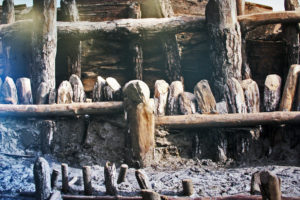 |
 |
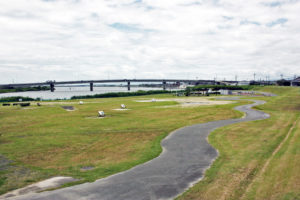 |
Lie on the spacious hilly area in the northeastern part of Saga. Remains of a ringed-dugout settlement
presumably dating back to the 3rd century B.C. were unearthed there, and excavation is still underway
at the site. They are among the largest archeological remains in Japan.
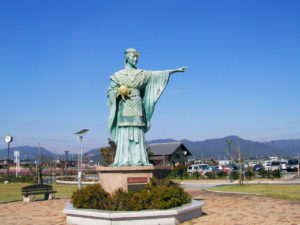 |
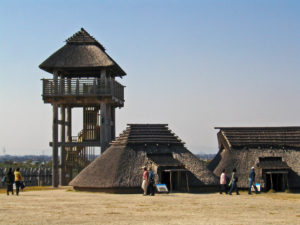 |
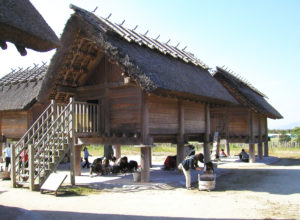 |
Note : we can arrange any other destinations considering your preferences for making
your own plan.
Should you need further information please feel free to contact us.
Your equiry can be sent by selecting the Enquiry Form link below.
You can also contact us by e-mail at info@japan-kyushu-tourist.com
Tel : +81-93-521-8897, Fax : +81-93-521-8898
Address : AIM buiding 6th floor, 3-8-1 Asano, Kokura-kitaku, Kitakyushu-city, Fukuoka-prefecture
Karatsu, Yobuko, Arita, Takeo tour
Where to Explore
Karatsu, Yobuko, Arita and Takeo
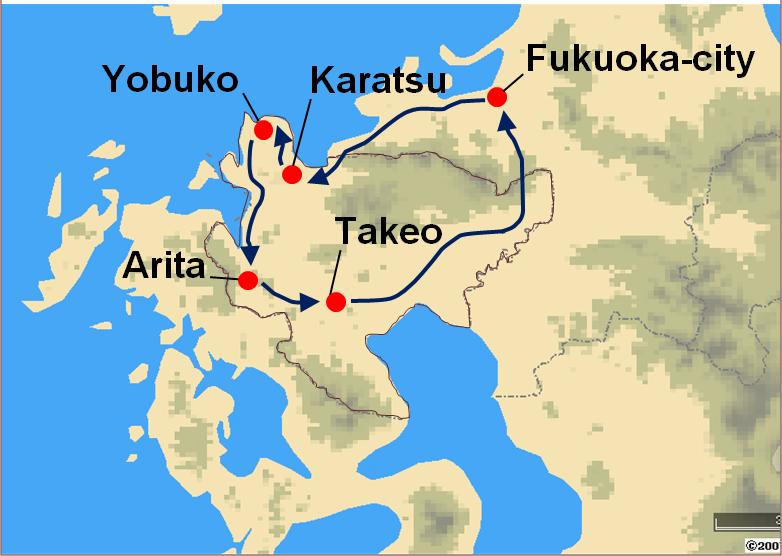
General condition
・Departure and disbandment place is in Fukuoka-city
・Chartered vehicle is used
Itinerary
8:30 Depart Fukuoka-city
Transfer to Karatsu using Nishi-kyushu Expressway, 1 hour
Visit Karatsu Castle
transfer to Yobuko and Hado-misaki Cape
Lunch at Yobuko. enjoy fresh Squid
transfer to Arita and visit Arita Porcelain Park
Exploring Takeo
Transfer to Fukuoka using Kyushu Expressway, 1 hour 30minutes
18:00 Arrive at Fukuoka-city
Where to explore
Located on the Higashi Matsuura Peninsula in the northwestern part of Saga-prefecture,
have been prosperous from ancient times as an important point for trade with China.
Town of Fishing industry, famous for Squid and Morning Market called Asaichi.
Yobuko is located northern tip of Saga-prefecture and is facing to Denkai-nada Sea.
A lot of places were as a Shooting location of Thailand drama.
|
Fresh Squid |
Lovers’ sanctuary Cape
The main attractions of Cape Hado are the heart-shaped monument, underwater observation tower,
and the sunset. It is frequented by young couples who take photos in front of the heart monument,
and also by families who hang out at the wide, beautiful grasslands by the sea.
|
Hado-misaki beach |
Heart monument |
The north-west end |
Famous for Arita yaki which is 400-years old porcelain. The piece is bright, elegant pictures
drawn in transparent white porcelain.
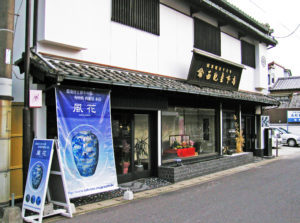 |
 |
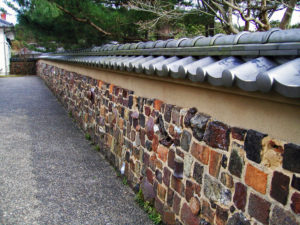 |
Onsen town, has 1300 years history.
Takeo is located in the western part of Saga-prefecture and Takeo’s Onsen waters feel silky
smooth on skin thanks to a high concentration of sodium bicarbonate.
The town was used as a Shooting location of Thailand drama.
Should you need further information please feel free to contact us.
Your equiry can be sent by selecting the Enquiry Form link below.
You can also contact us by e-mail at info@japan-kyushu-tourist.com
Tel : +81-93-521-8897, Fax : +81-93-521-8898
Address : AIM buiding 6th floor, 3-8-1 Asano, Kokura-kitaku, Kitakyushu-city, Fukuoka-prefecture
Industrial Heritage tour in Kitakyushu
The tour offers how Japan became the world’s leading
Industrial country.
In 1901, Japanese modern steel industry started in Kitakyushu. Since then Kitakyushu became
the industry city and Japan’s Industrial modernization has been achieved here with
unprecedented surprising speed.
Tour condition
・Start and end of the tour is to be Kitakyushu
・Guided by Industrial Heritage guide
・Chartered vehicle such as a jumbo taxi or bus
World Herigtage → Lunch at Otani Kaikan Hall → Kawachi Resevoir
Japan’s Modern Steel Works history started here
Yawata was a rural village with a small population of agriculture and fishing industry.
And this place was decided in Parliament as the Japan’s Modern Steel Works
construction site in 1897.
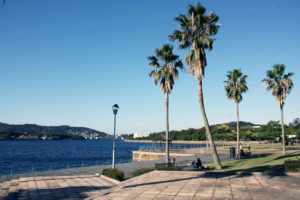 |
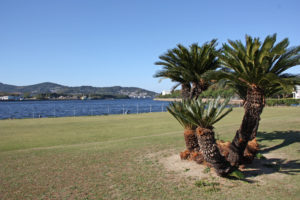 |
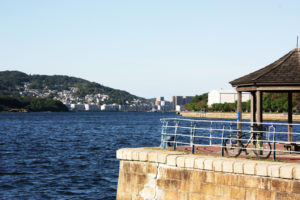 |
In April 2007, based on this theme of “innovation,” the Kitakyushu Innovation Gallery & Studio (KIGS)
opened in Yahata, Higashida, the first site of steel manufacturing in Japan’s modern age.
|
Museum Building |
World Heritage, Meiji Japan’s Industry Revolution |
Introducing Industry innovation history of Japan |
This office is a Witness who has been watching the history of industrial
modernization in Japan while also experiencing war.
received the Kitakyushu City Architectural Culture Award in 1989.
Connected between Yawata and Tobata. Construction work took three years, and completed in 1930.
The most difficult and hard work was making Miyatayama tunnel with a total length of 1180 m due to
suffering from floods.
The gates of the Miyatayama tunnel are decorated with stately designs.
|
The rail way crossing the road |
Miyatayama tunnel Yahata side |
Miyatayama tunnel Tobata |
Should you need further information please feel free to contact us.
Your equiry can be sent by selecting the Enquiry Form link below.
You can also contact us by e-mail at info@japan-kyushu-tourist.com
Tel : +81-93-521-8897, Fax : +81-93-521-8898
Address : AIM buiding 6th floor, 3-8-1 Asano, Kokura-kitaku, Kitakyushu-city, Fukuoka-prefecture
Takeo & Arita & Imari
The Onsen resort, has 1200 years history
Takeo is located in the western part of Saga-prefecture.
The hot spring temperature is 18 to 52 degrees. Spring quality is smooth with alkaline simple
hot spring. It is said that the color is colorless and transparent and has an outstanding effect
on recovery from fatigue.
The landmark of Takeo Onsen.
Romon Gate, which was designed by a renowned architect in the Meiji Era, Kingo Tatsuno,
and is at the entrance of the Onsen area.
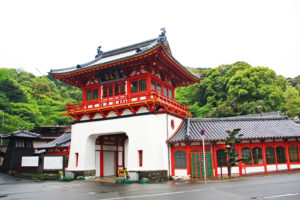 |
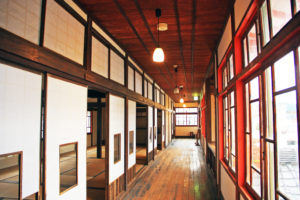 |
Beautiful Japanese Garden, located in the southwestern foot of Mifuneyama
Construction of the garden took about 3 years and completed in 1845, the area is about 5ha.
The dynamic cliffs of Mifuneyama Mountain can be seen from the gardesn.
 |
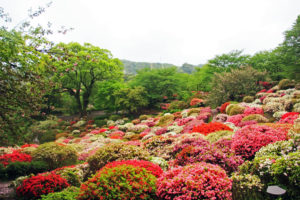 |
 |
Big Camphor tree at Takeo Shrine
One of the oldest Camphor tree in Japan.
The tree is one of the largest in Japan and over 3,000 years old. Designated a natural monument
of the city. It is 30 m high, has a circumference of 20 m, and its branches extend 30 m east-west
and 33 m north-south.
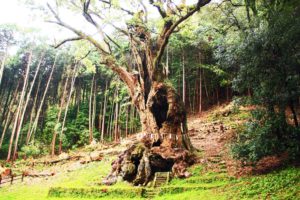 |
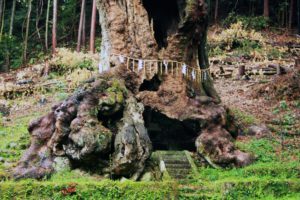 |
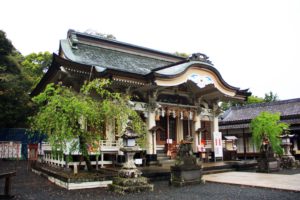 |
Famous for Arita yaki which is 400-years old porcelain. The piece is bright, elegant pictures
drawn in transparent white porcelain.
Arita Porcelain Park
|
|
|
|
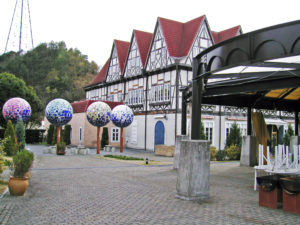 |
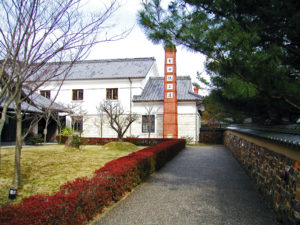 |
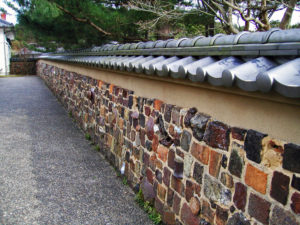 |
Porcelain Manufacturer
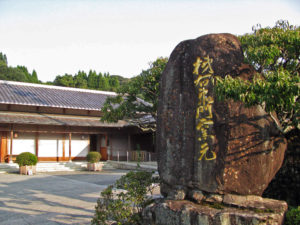 |
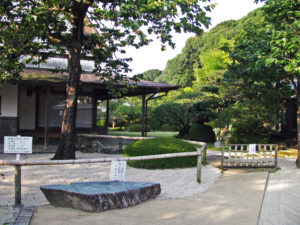 |
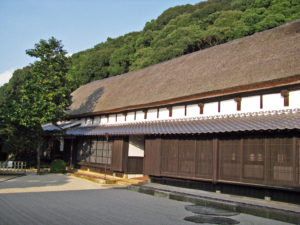 |
The porcelain town, has 400years history.
Imari is most notable because of Imari porcelain, which is the European collectors’ name for
Japanese porcelain wares made in the town of Arita, Saga Prefecture.
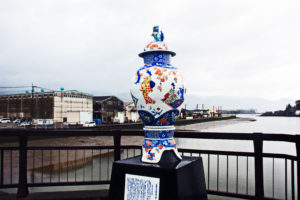 |
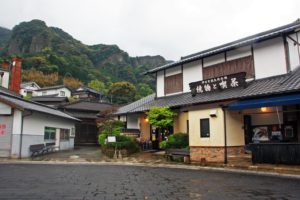 |
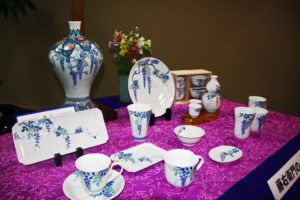 |
Location of Takeo & Arita & Imari
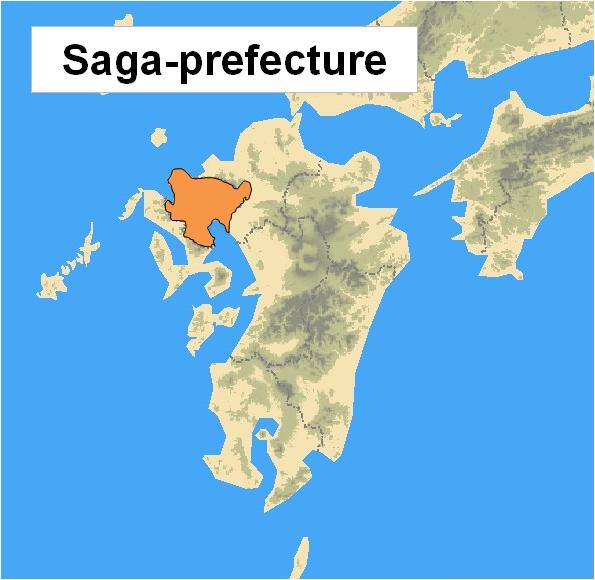
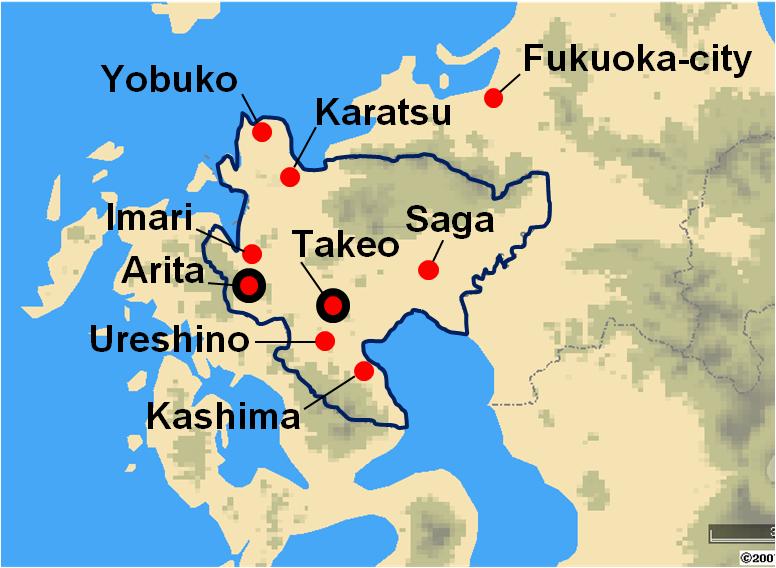
Should you need further information please feel free to contact us.
Your equiry can be sent by selecting the Enquiry Form link below.
You can also contact us by e-mail at info@japan-kyushu-tourist.com
Tel : +81-93-521-8897, Fax : +81-93-521-8898
Address : AIM buiding 6th floor, 3-8-1 Asano, Kokura-kitaku, Kitakyushu-city, Fukuoka-prefecture
Environmental and Waste management tour
Kitakyushu is offering various Environmental and Waste manatement
technologies.
Kitakyushu-city, once known as a “town of pollution,” now plays the role of the driving
force in creating a recycling-oriented society in Japan making use of the experience
and know-how it accumulated in the process of overcoming its pollution in order to
provide international cooperation.
Our study tour provides the solutions of the Environmental issues
Model of the tour
Lecture of Environmental improvement business
Lecturer : Masa Kondo, managing director of Japan KYUSHU Tourist
(have expertise and experience in the technical field)
Content of lecture
History to Environmental Future city
World leading environmental business
Venue : Kitakyushu Innovation Gallery
Where to visit
Please select from the following
Eco Project information center that supports the Eco-town. It introduces initiatives and activities
implemented in Eco-town to encourage people to proactively used the facility for such activities
as environmental study sessions and interaction amongst visitors.
 |
 |
 |
Zero Emission Transportation System
The Electric bus driven by the electricity generated by a solar power generation, therefor no global
warming gases emitted from the bus. Operation of the system is commenced in 2015.
The solar power generation plant, the power charging equipment and Electric bus can be observed.
|
Solar Power Generation for the Electric bus |
Electric bus |
On the Electric bus |
Waste treatment and Recycling
Plastic PET Bottle recycling / Nishi-Nippon PET Recycling
PET (polyethylene terephthalate) bottles are sorted by municipalities and recycled into
pellets and flakes, which can be used as raw materials for polyester fibers and egg cartons
 |
 |
 |
Melting Furnace / Sin-Moji Plant
The collected waste including metals is melted at over 1,700 degree Celsius in the Melting
Furnace and then the melted slag and metals are discharged.
The slag is used as raw materials for pavement and bricks and the metals are re-used for
other steel products. The process and technology of the Melting Furnace can be learned.
 |
 |
 |
Waste paper recycling / Kyushu Seishi
Refined waste papers is recycled into toilet papers.
Sludge generated during the toilet paper production process is used to produce a
foaming inhibitor used by steel works.
 |
 |
 |
Power generation plants
Kyushu Electric Power / Shin-Kokura Plant
Kyushu’s first thermal power plant used LNG and power generation capacity is 1,800,000kw.
Generation of electricity process can be learned by visiting the turbine room, control room and
boiler plant
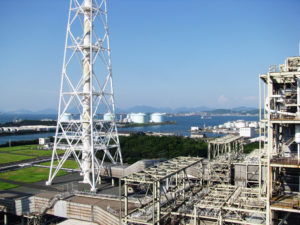 |
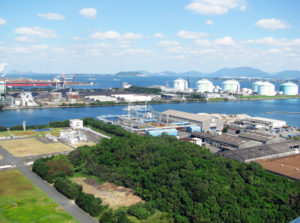 |
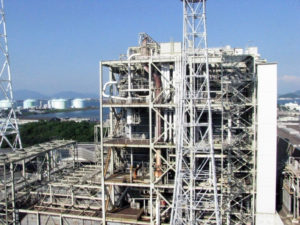 |
The company have been supplying low-cost and reliable electricity for over 60 years.
And research and development of the environmental measurement have been conducted.
New solar power generation and wind power generation systems can be learned.
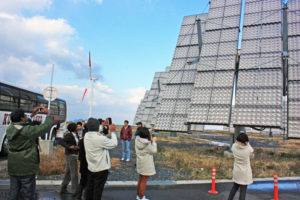 |
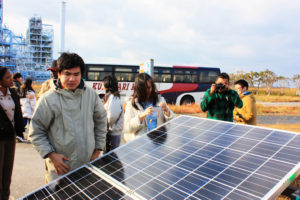 |
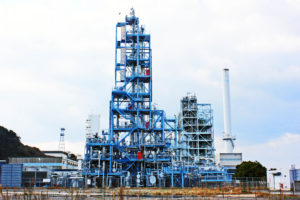 |
Japan’s first wind power generation plant constructed at the coast line facing windy strong
Hibikinada sea. 10 wind power generators line up and total generation capacity is 15,000kw.
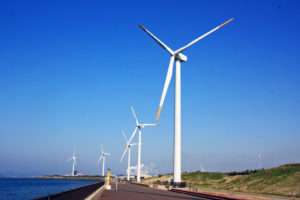 |
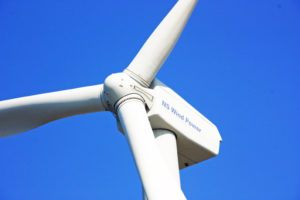 |
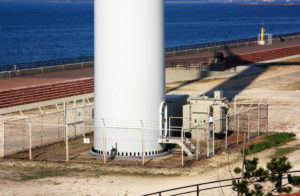 |
Water treatment plants and facilities
Hiagari Sewage water treatment plant
The sewage come through the sewer pipe is purified in the plant and flow into the sea.
There is an also new technology plant which the electricity is generated using the sludge from sewage.
At the Visitor Center established in 2015, sewage treatment process and technologies can be learned.
 |
 |
 |
The Plant making fresh water from sea water and sewage water established in 2011.
The desalination process and technology can be leared.
 |
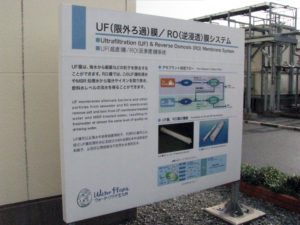 |
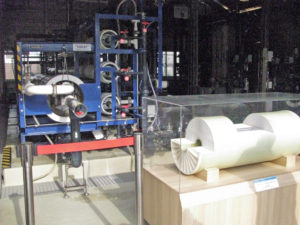 |
Should you need further information please feel free to contact us.
Your equiry can be sent by selecting the Enquiry Form link below.
You can also contact us by e-mail at info@japan-kyushu-tourist.com
Tel : +81-93-521-8897, Fax : +81-93-521-8898
Address : AIM buiding 6th floor, 3-8-1 Asano, Kokura-kitaku, Kitakyushu-city, Fukuoka-prefecture

